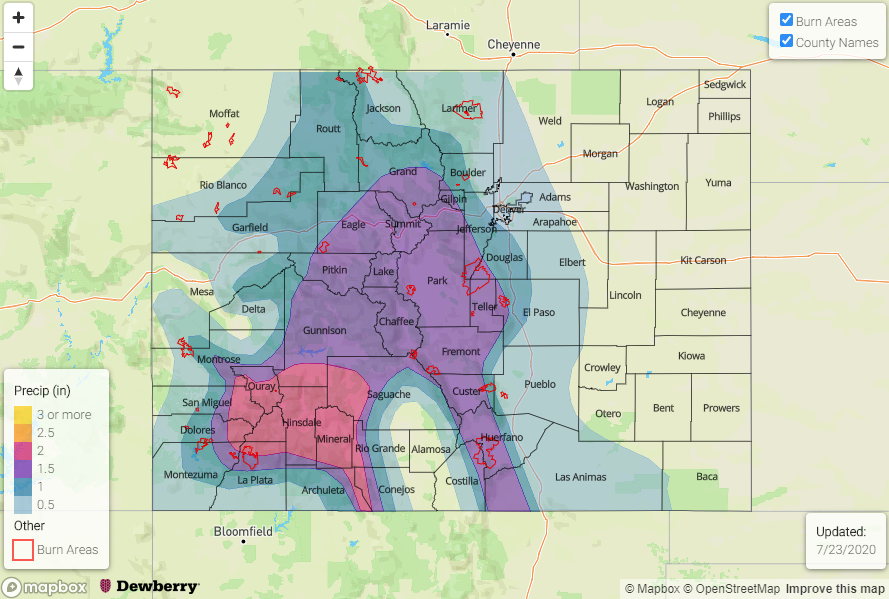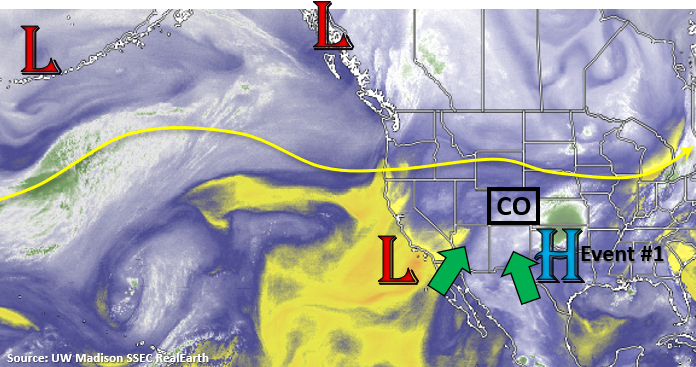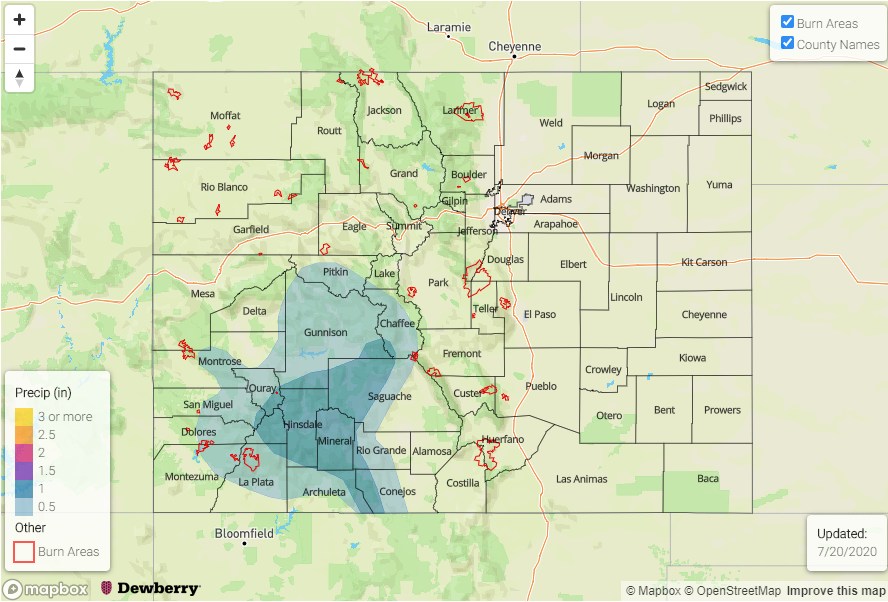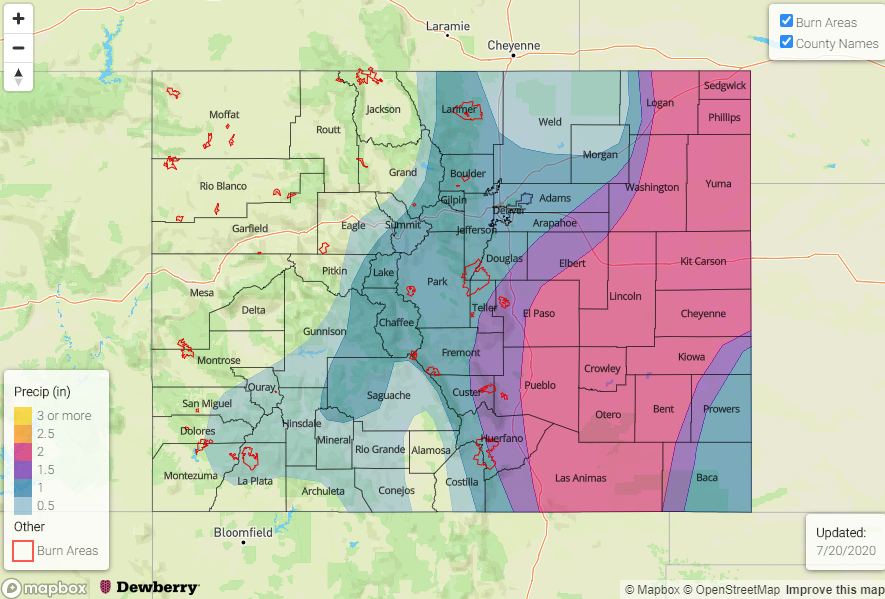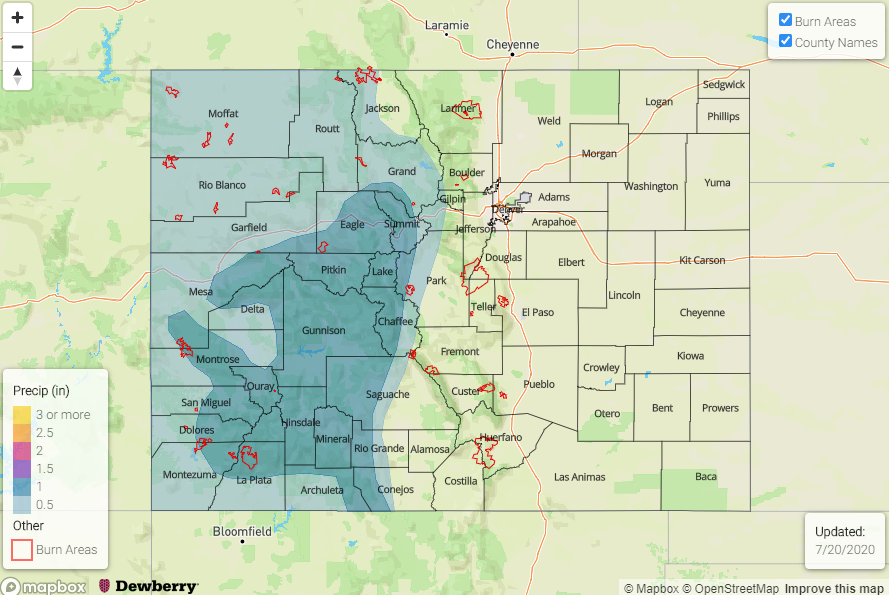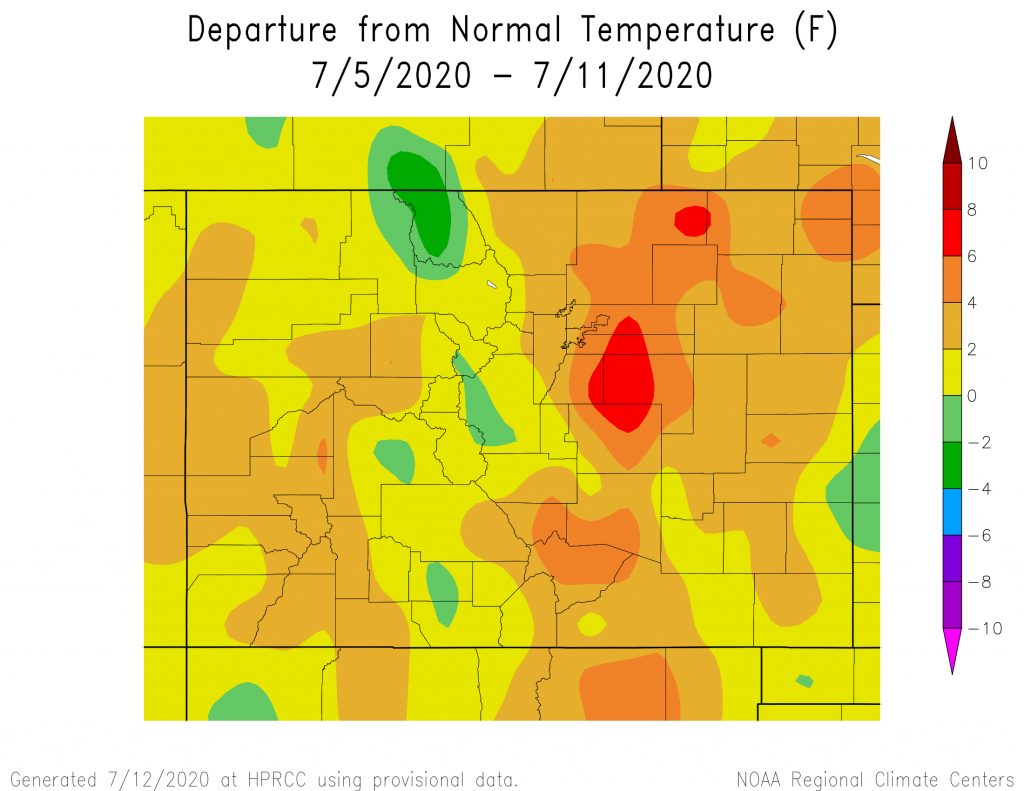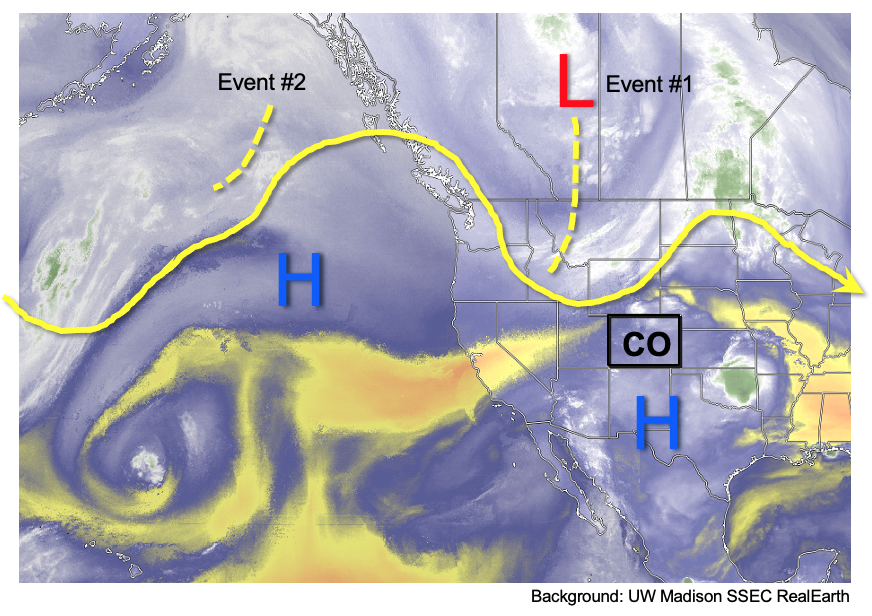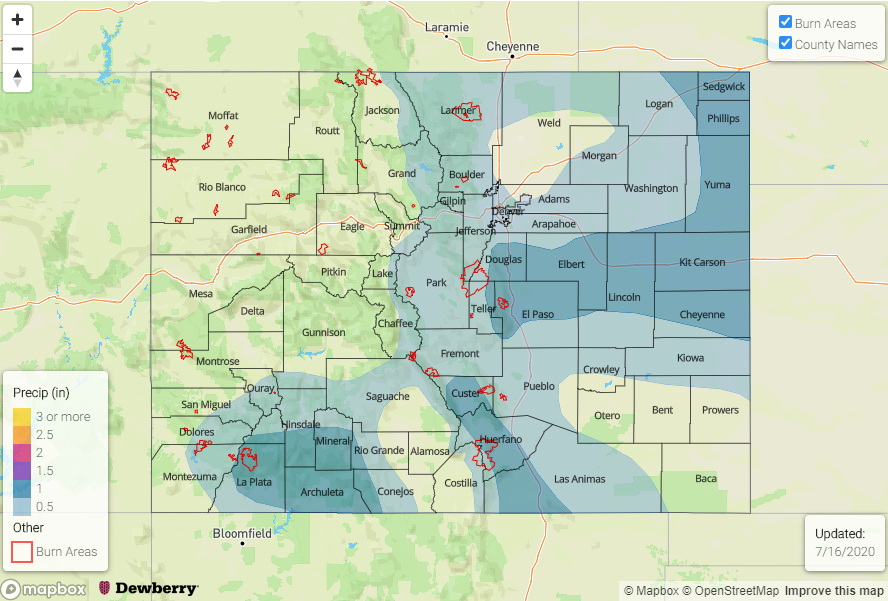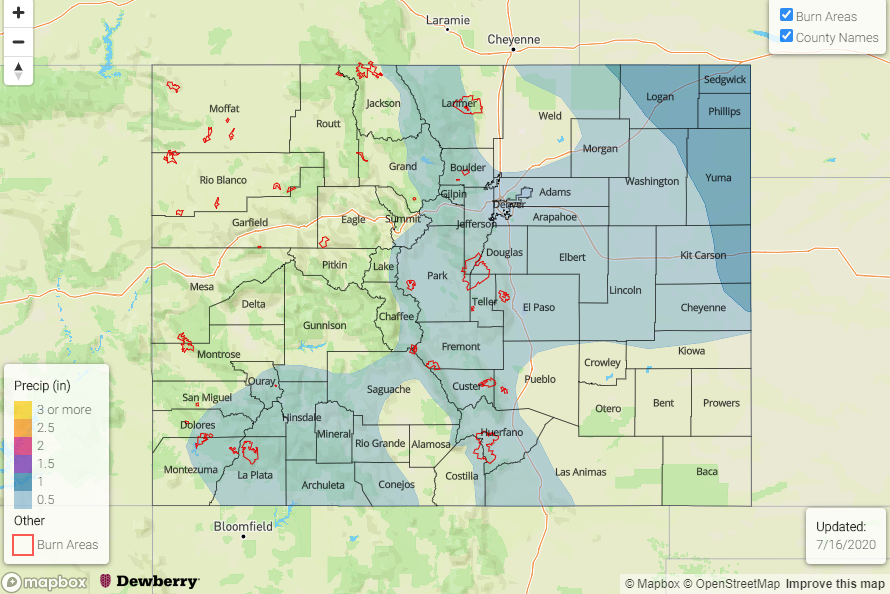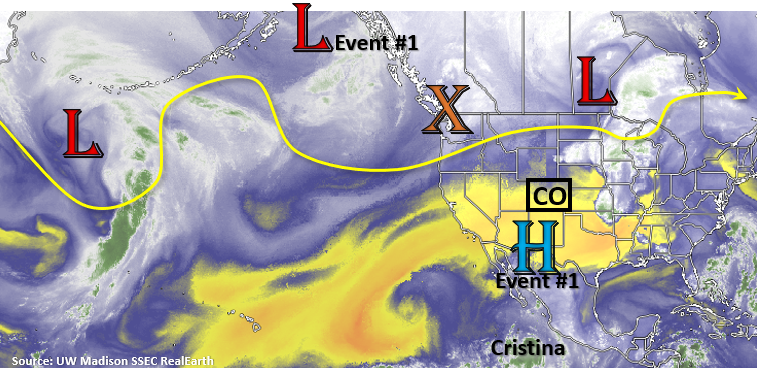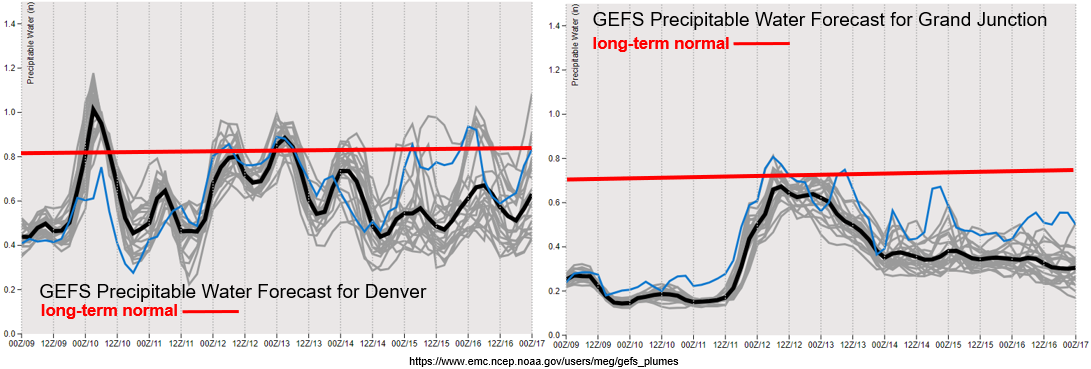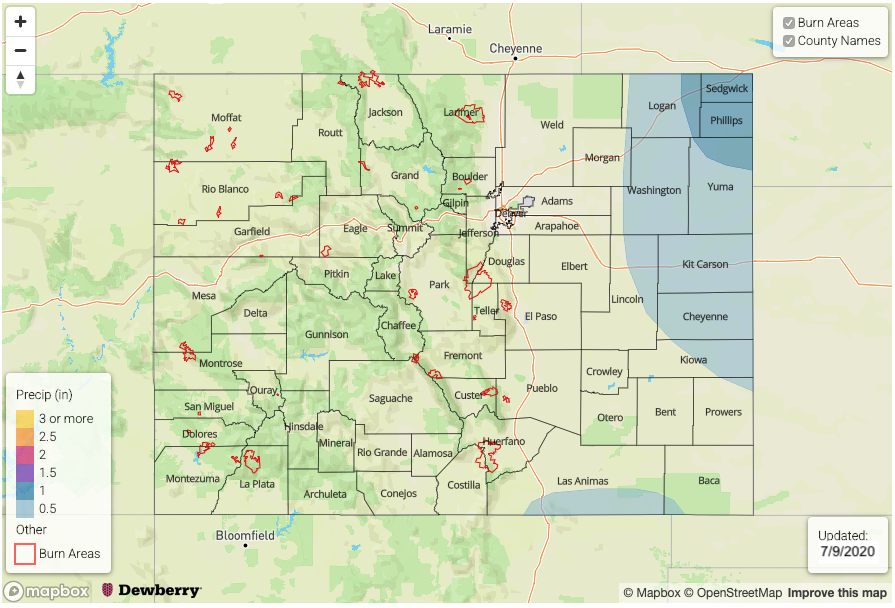Issue Date: Monday, July 20th, 2020
Issue Time: 3PM MDT
Valid Dates: 7/21– 8/4

The unsettled weather pattern will continue this week, and an Elevated flood threat has been issued for Tuesday (Event #1). Another cool front/moist outflow boundary will push its way into eastern Colorado tomorrow morning, setting the stage for some local, heavy rainfall over the adjacent plains as storms move off the mountains. Additional heavy rainfall will be possible over the Northeast Plains as a shortwave passes through the northwesterly flow helping spark a severe thunderstorm or two.
Event #2 begins on Wednesday, and the flood threat shifts back to western and southern Colorado. A cut-off low off the coast of California reinforces a PW surge with a building High to our southeast. The Low eventually looks to get absorbed (pulled to the northeast) by early this weekend, and then the ridge re-establishes itself over the central Plains. This will likely return heavy rainfall to the forecast by this weekend as a typical monsoon pattern takes hold.
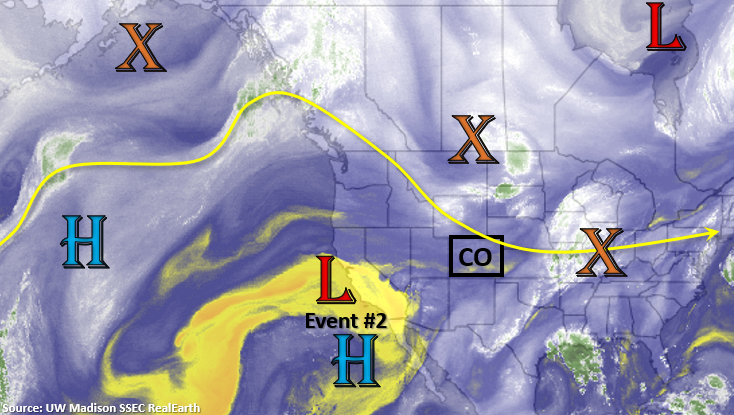
Elevated PW values near or above climatology should keep scattered storms in the forecast over the eastern mountains this week as seen by the GEFS plumes from Denver (left). On and off action over the adjacent plains should be expected with the best chance for storms further south along the Raton Ridge. Quite a bit of disagreement between members on PW values after Sunday, so low confidence in the forecast after this. Back to the west, there is a rapid rise in moisture as the Low moves inland on Wednesday. This will return moisture and rainfall to the forecast through this weekend. As this low is absorbed into the flow, extra mid-level energy is expected to help produce more widespread storms by the week’s end. Between this and slow steering winds under the building ridge, an Elevated flood threat has been issued.

Event #1: Tuesday (7/21)
Elevated Threat as mid-level lift and low-level moisture combine over eastern Colorado.
Another one day Elevated flood threat for this event at the tail end of the current set up. A cold front/moist outflow boundary will push through the eastern plains on Tuesday morning. Expect some fog and cloud cover over the area to start the day. Low-level moisture will be a bit deeper, so this will help set the stage for some heavy rainfall. There are two areas of concern. One is over the Palmer Ridge, where slower steering flows will allow some heavier rainfall to accumulate. The second is over the Northeast Plains where a passing shortwave could help trigger a few severe thunderstorms. Large hail and strong, damaging wind gusts will be the main threats from the thunderstorms, but dew points in the 60Fs will allow for some very high rain rates. Tune into for the latest in tomorrow’s FTB.
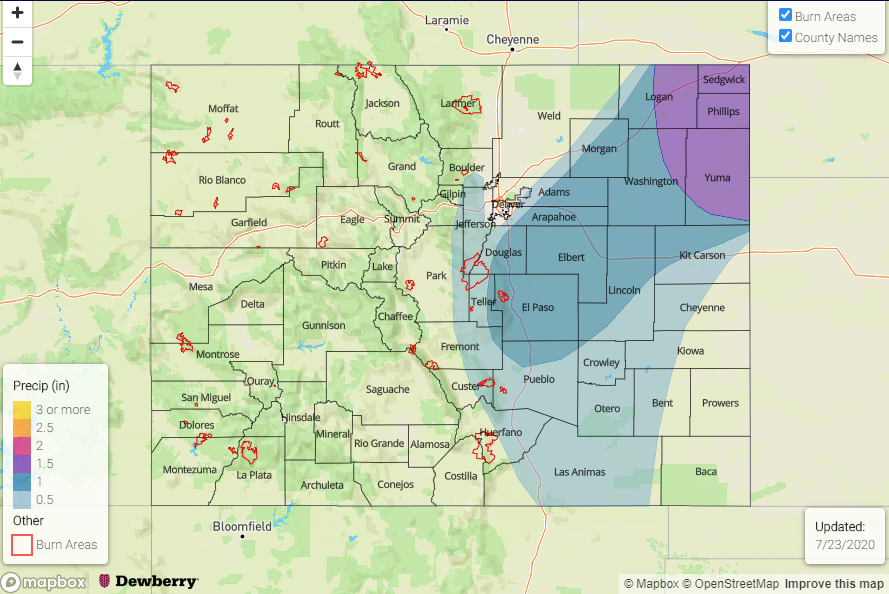
Event #2: Wednesday – Sunday (7/22 – 7/26)
No Apparent/Elevated Threat as a PW surge returns showers and thunderstorms to western Colorado and the mountains.
It’s going to be another active period for western Colorado and the mountains, which is good for the ongoing drought. There are some concerns with multiple days of rainfall and soils becoming saturated. This is especially true over the southern high terrains. Also concern for recent burn areas. Both will be monitored closely in each morning’s FTB. As waves move through the flow and combine with moisture, some days will likely have a higher flood threat than others. By this weekend, the pattern shifts to a more typical monsoon set up. This will likely keep showers in the forecast through the start of next week, but large spread in ensemble members means there is low confidence where the high will anchor by Monday.
